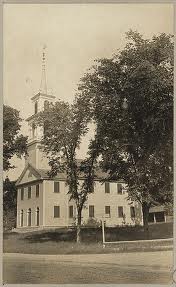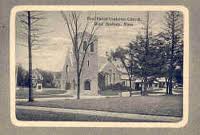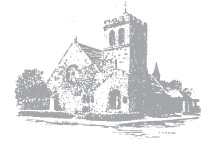Our Historic Buildings
 The congregation’s first meetinghouse, completed in 1711, was a simple structure located on Walter Street in what is now the Arnold Arboretum. By 1769 it was in dire need of repairs, and the congregation decided to build a new meetinghouse at the junction of Centre, South, and Church streets. It was completed in 1773 using lumber from the old structure on Walter Street. By 1821, the extensively remodeled Church Street meetinghouse had become a lovely, quintessentially New England church, complete with steeple and bell.
The congregation’s first meetinghouse, completed in 1711, was a simple structure located on Walter Street in what is now the Arnold Arboretum. By 1769 it was in dire need of repairs, and the congregation decided to build a new meetinghouse at the junction of Centre, South, and Church streets. It was completed in 1773 using lumber from the old structure on Walter Street. By 1821, the extensively remodeled Church Street meetinghouse had become a lovely, quintessentially New England church, complete with steeple and bell.
On January 22, 1890, at 2:30 a.m., a fire badly damaged the meetinghouse of the First Parish of West Roxbury. The fire was a crushing blow. There was controversy as to whether the old church should be repaired or moved to a new site in the middle of town. Those who wanted to maintain the church building had it evaluated for repair and moving. A builder assessed its condition and stated that it was not possible to safely move it. The old church stood abandoned and empty until 1914 when it was finally razed and the property sold.
At this time, the First Parish congregation split, and the more liberal members of the congregation formed the Unitarian Society in Roslindale. Those who remained in West Roxbury built a new structure in the center of town. The cornerstone was laid on October 14, 1891. The congregation thrived in its new location, and this building was quickly outgrown. It is now the Theodore Parker Church parish hall.
 The plan for the second meetinghouse began in 1899. The building was designed by Henry M. Seaver, the son of congregation members. He had been a draftsman in the office of Longfellow, Alden & Harlow and was a student at M. I. T. when he planned this building. He later became a well-regarded architect, especially in the western portion of Massachusetts. This building, the current sanctuary, was dedicated in 1900.
The plan for the second meetinghouse began in 1899. The building was designed by Henry M. Seaver, the son of congregation members. He had been a draftsman in the office of Longfellow, Alden & Harlow and was a student at M. I. T. when he planned this building. He later became a well-regarded architect, especially in the western portion of Massachusetts. This building, the current sanctuary, was dedicated in 1900.
A number of furnishings from the abandoned Church Street building were incorporated into both the Centre and Corey Street buildings. Theodore Parker’s pulpit is still in use, an 1802 clock continues to time the services, and the G. H. Holbrook bell is rung each Sunday. Pew doors recovered from the old church were repurposed as wainscotting for two rooms in the 1890 building and woodwork in various areas of the 1900 sanctuary building.

